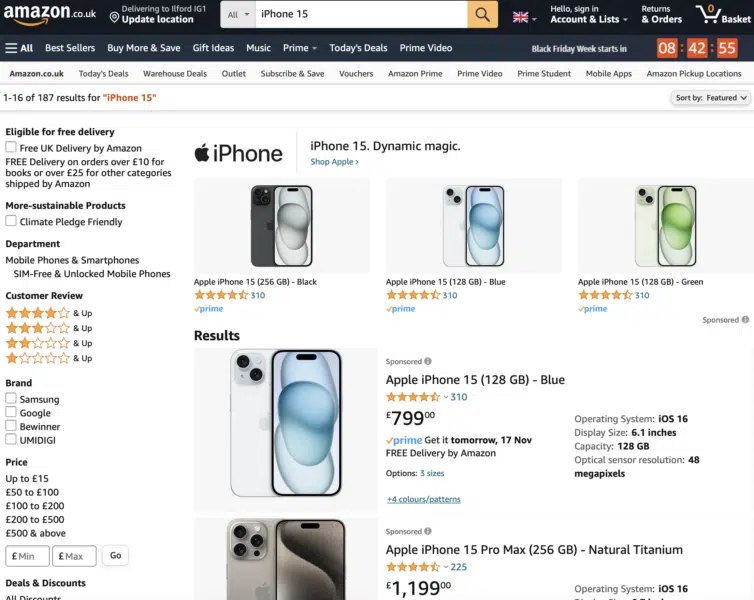Apple reportedly asked Amazon to stop competitor ads from appearing on its product pages.
In response, the retail giant allegedly agreed to only serve ads and recommendations at the very bottom of Apple product pages – a gesture it doesn’t provide to rival brands like Samsung and Microsoft.
This preferential treatment has supposedly enhanced Apple’s product pages, creating a more streamlined user experience, which has caused frustration amongst the company’s rivals, according to Business Insider.
Why we care. The alleged preferential treatment gives Apple a distinct advantage over rivals, creating an uneven playing field that makes it more difficult for competitors to succeed and realize a return on their investment.
What this means. When you search for Apple products on Amazon, you’ll notice that competing products are still listed, but Amazon restricts the ads placed above, below, and between the results. For instance, a search for an iPhone 15 displays only one Apple product banner at the top of the page and another ad banner at the very bottom:



However, searches for competing devices, such as the Samsung Galaxy S23, show ads for various products and services throughout the results page.




Special treatment? Juozas Kaziukenas, CEO of e-commerce research firm Marketplace Pulse, told Insider:
- “It’s clear Apple made a deal with Amazon that is not available to other brands.”
- “I can’t recall any other brand with the same setup.”
Financial implications. It’s not yet been confirmed whether Apple paid Amazon to block ads by rivals from appearing on its product pages. However, in emails shared by the House Judiciary Committee that date back to 2018, Amazon’s then-retail CEO Jeff Wilke suggested he had initially refused Apple’s request to block rival ads, writing:
- “We cannot alter our organic search algorithm to return only Apple products in the search results when an Apple team is searched.”
He then appeared to offer an alternative solution for Apple:
- “Apple would need to purchase these placements or compensate Amazon for the lost ad revenue.”
Amazon’s advertising unit, a significant driver of growth and profit earning over $38 billion last year, has been expanding ads on its platform, as per an FTC lawsuit. Given this context, Amazon’s deal with Apple to limit rival ads on its product pages is particularly noteworthy.
Deep dive. Read our report on Amazon’s ‘secret ad pricing scheme’ for more information.








